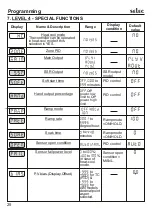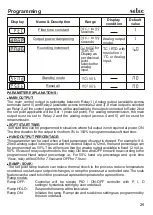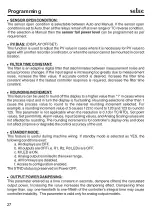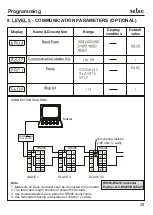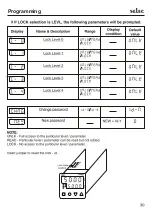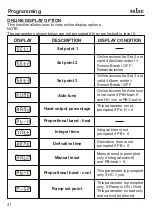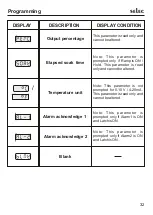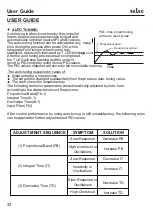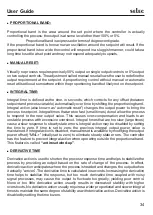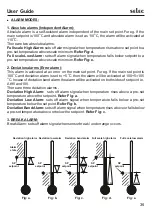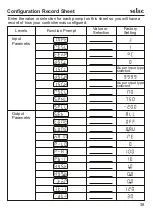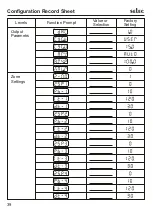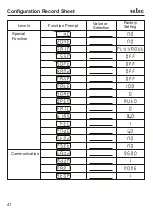
There are two absolute alarms-
Full scale High Alarm:
sets off alarm signal when temperature rises above set point to a
pre-set temperature above scale minimum.
Refer Fig: d.
!
ALARM MODES:
1. Absolute alarms (Independent Alarm) :
2. Deviation alarms (Error alarm):
This alarm is activated at an error on the main set point. For eg. If the main set point is
O
O
100 C and deviation alarm is set to +5 C then the alarm will be activated at 100+5=105
O
C. Incase of deviation band alarm the alarm will be activated on both sides of set point i.e.
At 95 and 105.
There are three deviation alarms -
Full scale Low Alarm:
sets off alarm signal when temperature falls below setpoint to a
pre-set temperature above scale minimum.
Refer Fig: e.
Deviation High Alarm:
sets off alarm signal when temperature rises above a pre-set
temperature above the set point.
Refer Fig: a.
Absolute alarm is a self-existent alarm independent of the main set point.For eg. If the
O
O
main set point is 100 C and absolute alarm is set as 110 C, the alarm will be activated at
O
110 C.
Deviation Low Alarm:
sets off alarm signal when temperature falls below a pre-set
temperature below the set point.
Refer Fig: b.
Deviation Band Alarm:
sets off alarm signal when temperature rises above or falls below
a pre-set temperature above or below the set point.
Refer Fig: c.
3. BREAK ALARM:
Break Alarm: sets off alarm signal when sensor break / under range occurs.
Deviation low alarm
Deviation band alarm Full scale high alarm
Full scale low alarm
Deviation high alarm
SP2
SP2
SP2
SP2
SP2
SP2
SP
setpoint
SP
setpoint
SP
setpoint
SP
setpoint
SP
setpoint
Alarm
state
Fig: a. Fig: b. Fig: c. Fig: d. Fig: e.
36
User Guide




